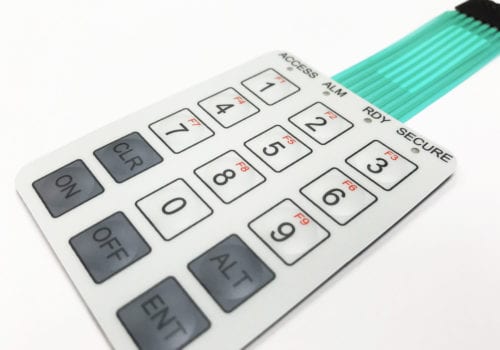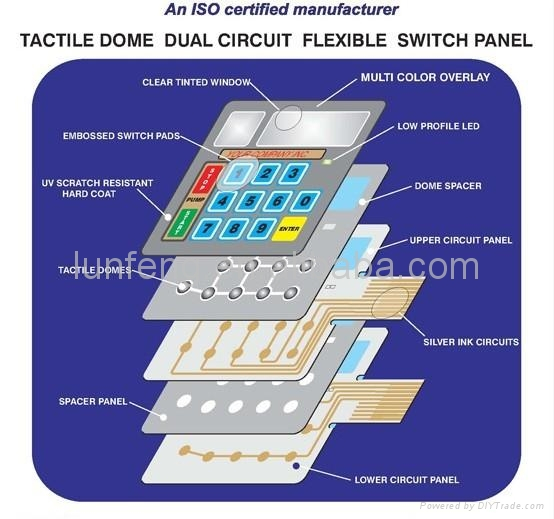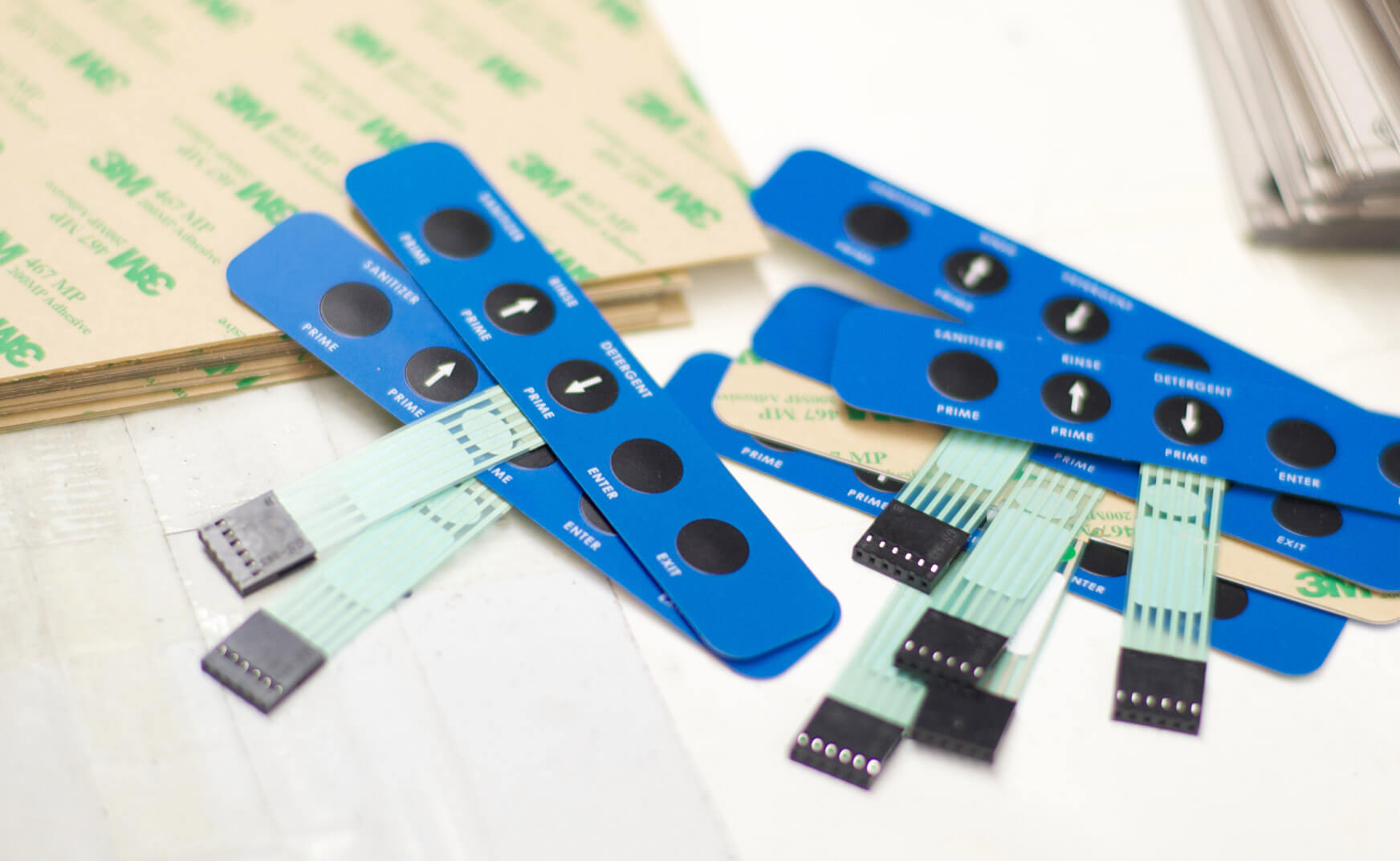Recognizing the Value of Membrane Switches in Interface
Membrane buttons are integral components in the design of effective user interfaces, facilitating not only capability however additionally improving visual charm and customer communication. Their unique features, such as resistance to ecological elements and adjustable styles, make them appropriate for a diverse array of applications throughout numerous markets. As we explore the future patterns and different benefits linked with Membrane innovation, it comes to be clear that these buttons are more than simply parts; they stand for a convergence of technology and practicality. The effects of this technology on individual experience deserve analyzing additionally.
What Are Membrane Buttons?

The spacer layer, which includes adhesive homes, enables the separation of the circuit layer from the overlay, guaranteeing that the switch stays in a non-activated state until pushed. When stress is put on the overlay, it compresses the spacer layer, linking the space and completing the circuit in the underlying layer. This design not only minimizes the physical room required for traditional mechanical buttons however also enhances the longevity of the device, as Membrane switches are usually resistant to dust, wetness, and other environmental factors.
Generally discovered in applications ranging from consumer electronics to medical tools, Membrane switches are indispensable to modern-day technology, offering a easy to use and effective interface that straightens with modern layout needs.
Benefits of Membrane Buttons
While countless button modern technologies exist, Membrane Switches offer distinct benefits that make them especially preferable in numerous applications. Among the key benefits of Membrane buttons is their compact layout, which permits for space-saving implementations in devices where real estate is limited. Their thin account not only boosts aesthetic charm but additionally promotes light-weight construction.
An additional considerable benefit is their resistance to ecological elements. Membrane switches are typically secured against moisture, dirt, and pollutants, making them ideal for usage in demanding settings, such as clinical gadgets and industrial tools. This longevity extends the life-span of the button, minimizing maintenance expenses and boosting dependability.
Moreover, Membrane switches can be customized to fulfill certain style demands, incorporating unique graphics and colors that improve customer communication. Their tactile responses alternatives can also be tailored to give a satisfying individual experience. Additionally, Membrane buttons are cost-efficient, especially in high-volume applications, as they can be produced successfully.
Applications in Numerous Industries

In the customer electronic devices look at this now sector, Membrane switches are widespread in tools such as microwaves, washing machines, and remote controls. Their responsive comments and aesthetic choices improve user experience while supplying a streamlined, modern look. Furthermore, automotive producers utilize Membrane switches in dashboard controls and infomercial systems, where space is restricted, and user involvement is critical.
Moreover, the industrial sector leverages Membrane switches in control panels for machinery and equipment, allowing for user-friendly procedure in commonly rough settings. Their resistance to chemicals and dampness makes certain longevity and integrity in these applications. On the whole, the flexibility of Membrane Switches contributes dramatically to their extensive use, making them vital in different technical domains.
Style Factors To Consider for Membrane Switches

When designing Membrane buttons, numerous vital considerations must be taken into account to make sure ideal performance and individual experience. The option of materials is essential; picking sturdy, top quality substrates can improve the switch's long life and resistance to ecological elements such as moisture and temperature changes.
Second of all, the style of the graphic overlay should prioritize quality and convenience of usage. Symbols and message should be understandable, and the design should facilitate instinctive interaction (membrane switches). Additionally, responsive feedback is essential; incorporating a responsive dome or various other mechanisms can boost the customer experience by giving physical verification of activation
Another vital variable is the button's electrical performance. Developers must guarantee that the conductive traces are correctly developed to reduce resistance and avoid signal disturbance. This includes evaluating the needed actuation force and ensuring compatibility with the electronic elements they will certainly user interface with.

Future Trends in Membrane Innovation
As technology remains to advancement, Membrane switches are positioned to progress considerably, driven by innovations in materials and manufacturing techniques. One emerging pattern is the consolidation of advanced products, such as conductive inks and adaptable substrates, which improve toughness and reduce the general weight of Membrane buttons. These products not only enhance the tactile feedback however additionally permit the layout of buttons that can withstand harsher ecological problems.
In addition, the integration of touch-sensitive technologies is transforming conventional Membrane Switches into even more interactive interface. Capacitive touch sensing units embedded within Membrane switch panels can offer a more receptive and intuitive customer experience, straightening with the growing need for sleek, modern layouts in consumer electronic devices.
Additionally, innovations in printing strategies, such as digital and 3D printing, enable fast prototyping and modification of Membrane buttons. This flexibility enables makers to react faster to market demands and customer choices.
Lastly, sustainability is coming to be a considerable emphasis, with producers checking out eco-friendly products and processes. As these patterns unfold, the future of Membrane technology promises improved performance, aesthetic allure, and ecological responsibility, strengthening their function in advanced individual interfaces throughout various sectors.
Final Thought
In final thought, Membrane Switches represent a crucial part in the layout of individual interfaces, integrating performance with aesthetic versatility. As improvements in technology proceed, the advancement of Membrane switches is anticipated to more improve customer interfaces, driving development and improving functionality in an increasingly intricate technical landscape.
Membrane switches are integral parts in the style of efficient customer interfaces, promoting not just functionality yet additionally enhancing visual charm and customer interaction.Membrane Switches offer as a crucial part in numerous user interfaces, facilitating a seamless interaction in between customers and digital gadgets.While various switch technologies exist, Membrane Switches offer unique benefits that make them specifically desirable in different applications.Furthermore, see this Membrane buttons can be personalized to satisfy certain style requirements, including one-of-a-kind graphics and colors that enhance customer communication.In verdict, Membrane Switches stand for a crucial element in the layout of individual interfaces, incorporating performance with aesthetic flexibility.